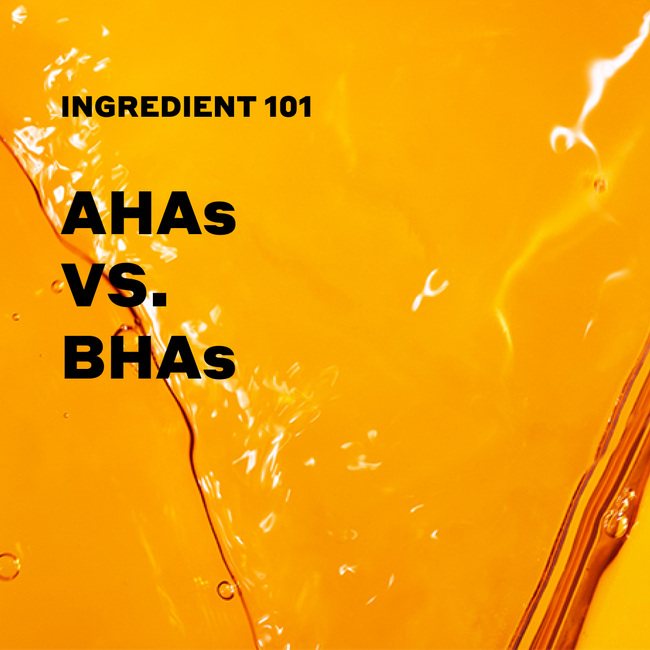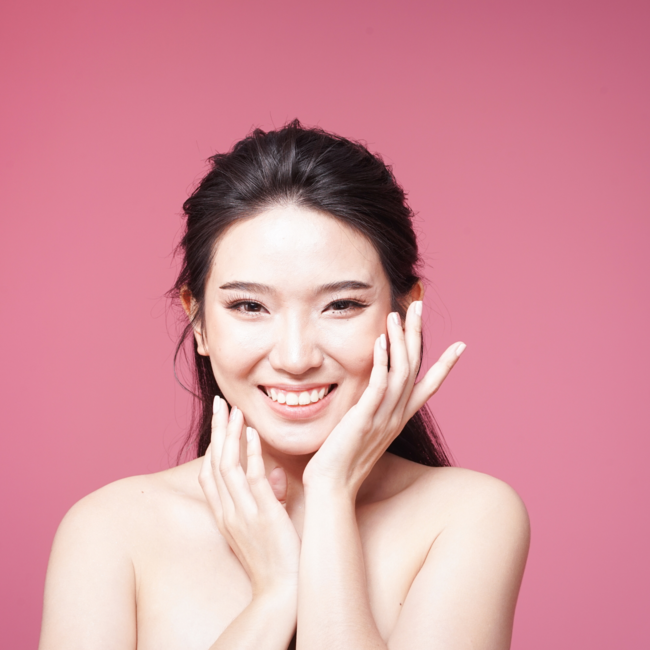Welcome to Ingredient 101 with Volition Beauty! Where we break down some of your favorite skincare ingredients, give you the facts and figures, and answer commonly asked questions.
Today, let's talk AHAs vs. BHAs. First off, what are AHAs & BHAs? Let's break down the differences between these acids and why you should look for them in your products.

Firstly, AHAs are Alpha Hydroxy Acids, and BHAs are Beta Hydroxy Acids (not to be confused with butylated hydroxyanisole which also goes by the acronym BHA and which is generally banned from clean skincare formulas).
AHAs and BHAs are both exfoliating acids. Their chemical makeup is slightly different, and they target different skincare needs and skin types.
Even though our skin undergoes a natural exfoliating process every day, this natural process of shedding dulling skin cells from the skin’s surface unfortunately tends to slow down with age and also if we fail to protect our skin from sun exposure. Therefore a little helping hand from exfoliating ingredients in skincare formulas is good for a glowing complexion.
AHAs are derived from sources like sugar cane, apples, pineapples and papayas – consequently they are sometimes collectively referred to as “fruit acids”. AHAs are generally recommended for normal to dry, sun-damaged skin, thanks to their ability to enhance natural moisturizing factors within the skin. In the epidermis, AHAs have an exfoliative effect, increasing the shedding of dead skin cells retained at the surface. They do this by gently loosening the residual bonds between dead skin cells. Once separated from each other, those cells can then fall away. AHAs also help to stimulate collagen production, making them suitable for those looking to reduce the appearance of fine lines and wrinkles. Glycolic Acid is a commonly used AHA in skincare.
BHAs, on the other hand, are carboxylic acids that work on skin’s surface but also deep inside the pore. BHAs are oil-soluble, so they are particularly appropriate for normal to oily skin that's prone to blemishes, clogged and enlarged pores. BHAs are great at calming the skin and therefore are gentle enough for sensitive skin types, including those prone to redness. Salicylic Acid is a widely used BHA in skincare that is formulated to tackle bacteria and treat dry skin.
When choosing between AHAs and BHAs, it all depends on your principal skin concerns. If blemishes and stubborn pores are your main issues, BHAs are recommended, or perhaps a combination of AHAs and BHAs. For dry skin, AHAs are an ideal solution if your goal is to exfoliate just the top layer of your skin. A word of caution: products with AHAs and BHAs can cause skin irritation if doses are too high. AHAs and BHAs are strong humectants that do have a peeling effect and can cause the skin to dry out if overused. For this reason, it is widely recommended that they should be used a few times a week as opposed to every day.




